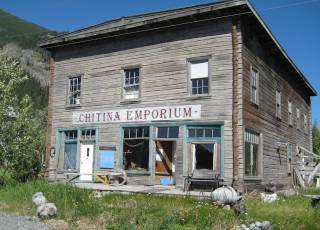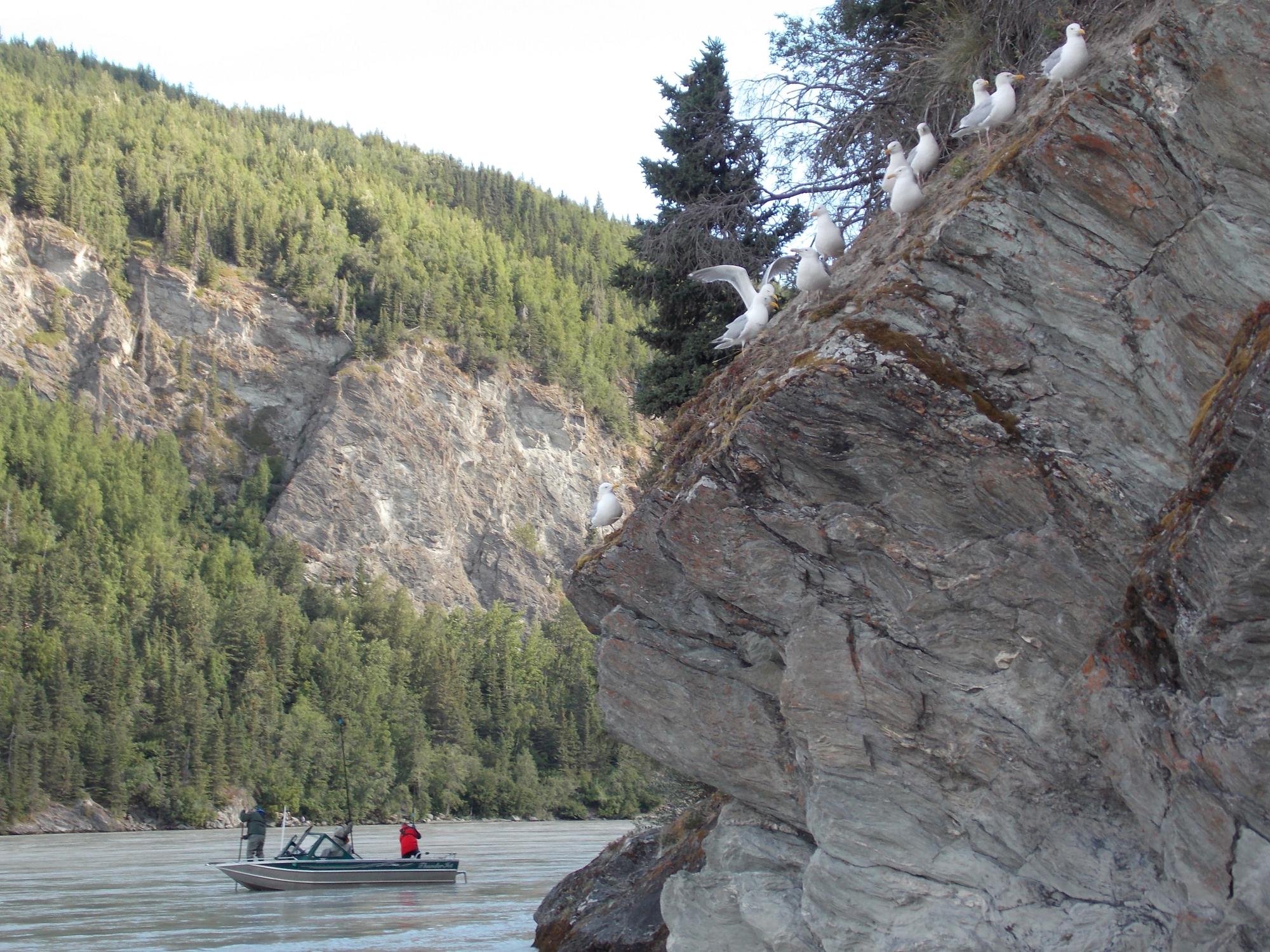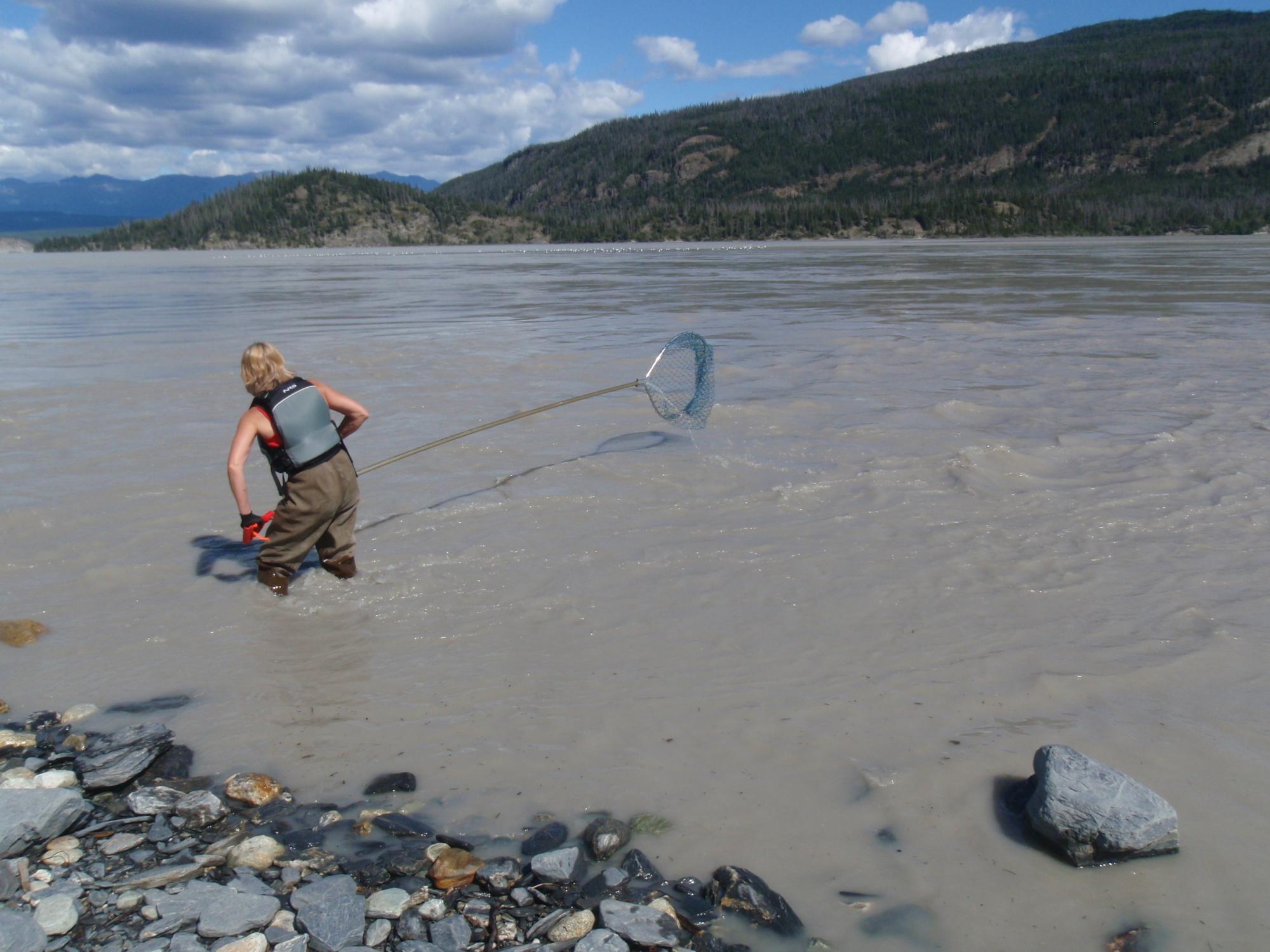When to go dipnetting
The first season opening period on the Copper River begins between June 7th and 14th. ADF&G sets the times and dates for fishing periods based on run strength and their projections for the salmon run. See our fishing information page or the ADF&G schedule for up to date information on the weekly schedule.
Trip planning
Ensure the fishery is open before coming to Chitina! The personal use fishery is managed by "emergency openings". The openings are typically scheduled at least a week in advance. There could be occasion where an opening is cancelled, even part way through the scheduled times/dates though that is rare/has perhaps never happened. Check the schedules listed above for times and dates.
In recent years, the Copper River king salmon run has been weak, forcing ADF&G to curtail or severely restrict the harvest of the one king allowed in the Chitina personal use bag limit. It is recommended that if you are interested in harvesting a king, plan your trip early in the season. If the king salmon season is shut down, all kings finding their way into your net must be returned, unharmed and with as little stress as possible, to the water. That means, among other things, no selfies with your out-o-season kings! ADF&G will announce when kings are closed and CDA will relay that information on this website.
The first factor to check when planning a trip is the salmon run strength. You won't catch much if the fish aren't in our fishing area! Check online forums or with friends to see if people are catching fish at Chitina. Check the fish counts at Fish and Game's Miles Lake sonar station. Salmon take between two and three weeks to travel from the Miles Lake sonar to the personal use fishing area. If you see a big bolt of fish coming through the counter, two or three weeks later they should be in the Chitina area. The Chitina Dipnetters maintain historical copies of the ADF&G sonar data and has graphics available for comparison between runs over the years.
Your second factor to consider, is the level of water in the Copper River. River level greatly affects river fishability. Not only is high water more difficult to fish in, the fish tend to not travel as much, so the few fish that are caught are not being replaced by new fish coming upstream. The two primary influencing factors on water level are precipitation and heat. Heavy rain anywhere upstream of Chitina will cause river–levels to rise quickly.This is only magnified where the river narrows in Woods Canyon. The CDA Graphs page will help you keep an eye on river level at the Chitina Bridge. The second factor is heat. Hot, sunny days melt snow and glacial ice, causing river levels to rise. Four or five days of hot, sunny weather usually blows out fishing until cooler weather prevails. Finally, very occasionally, a back-country glacial ice dam breaks, releasing vast quantities of water resulting in very quickly rising water levels without warning. This occurs infrequently, but fishing is blown out for a day or two after until the water recedes.
What to Bring
The Copper River is cold, swift, and unforgiving. It's essential to bring a strong sense of personal safety, as there are few second chances if you fall into the river.
License and permit
A sport fishing license and Chitina Personal Use dipnet permit are required. ADF&G sells them online or they are available at various sporting good vendors around the state. Make sure to print and carry your fishing license and dipnet permit while fishing or transporting your catch. Dipnet permits cost $15 and are issued per household, not individually! Permit holders are allowed an annual bag limit of 25 salmon plus 10 salmon for each additional household member.
Gear
You'll need to bring the normal Alaskan adventure gear: warm clothes, boots, rain gear, and a place to stay (camper, tent, motor home, or rough it). Local lodging may be available in and around Chitina, but be sure to reserve in advance if that is your plan. Groceries and restaurants are not always available in Chitina, so either bring food and cooking equipment or know that an establishment will be open.
The fishing portion of the adventure requires, at absolute minimum,
-
Chitina PU dipnet permit
-
Alaska Sport Fish License
-
dipnet
-
fish stringers
-
cleaning/filleting knives
-
coolers
-
ice
You'll almost certainly want a number of other items to make your fishing trip much safer/ easier/less frustrating, including
-
life jackets
-
strong tie-off ropes and harnesses in case you fall in the water
-
fish bonker
-
smaller line utility
-
backpack or buckets to carry fish to vehicle
-
Folding table or other surface for cleaning/filleting fish.
If you intend to fish from challenging sections of the shoreline, safety ropes and harnesses to tie yourself to shore are highly recommended. Some fishing areas are inaccessible without climbing ropes. Do not bring kids or dogs that might jump in the water!
The Town of Chitina

Chitina is a small town. Businesses come and go every year. Sometimes gasoline, groceries, ice and other supplies are available; sometimes not! We try to keep a list of active businesses on our website but cannot promise the list will always be up to date. Kenny Lake, 26 miles back towards the Richardson Highway, pretty reliably has all services.

